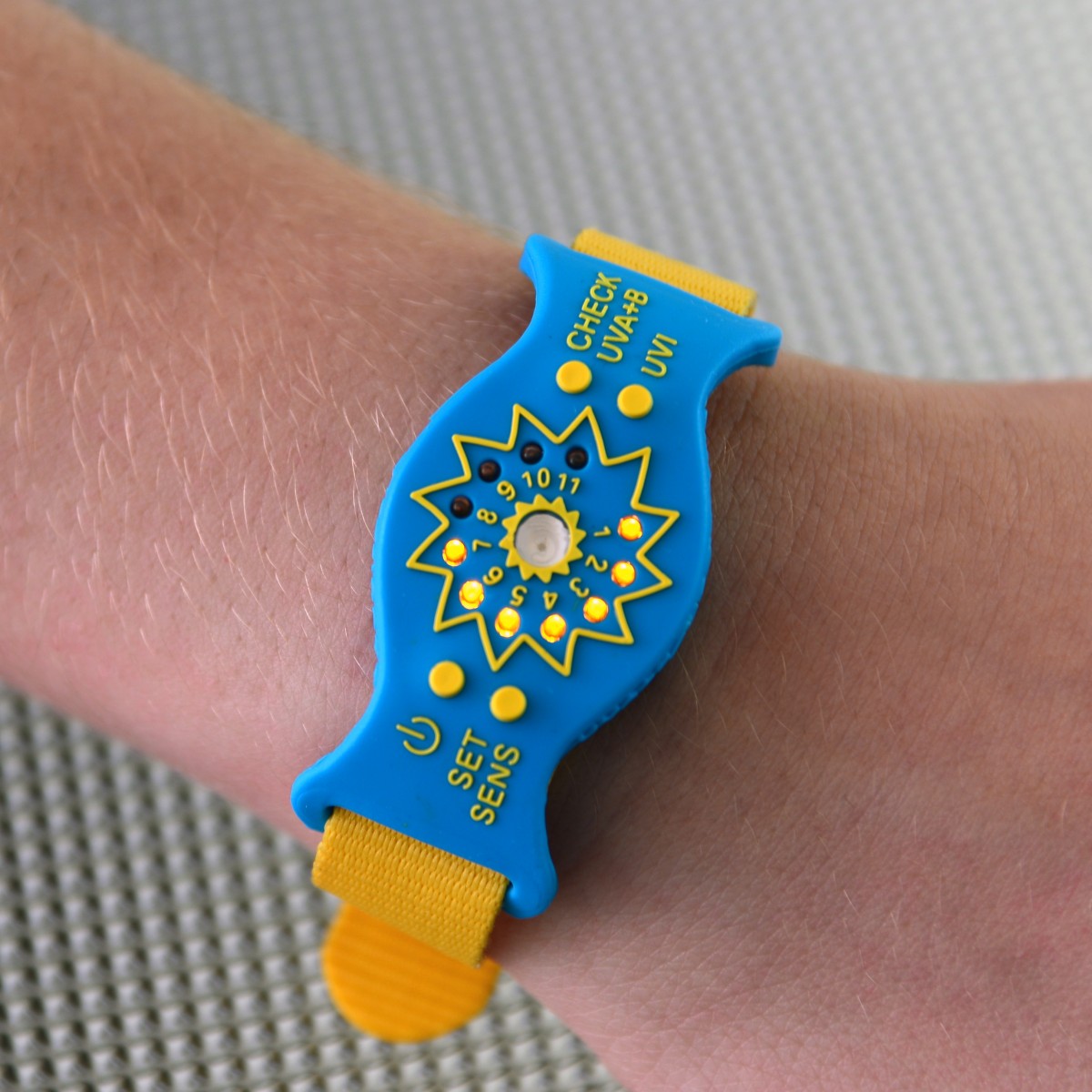


Lots of cyclists worry about too much exposure to ultraviolet rays. But, how does one know when they’ve spent too much time in the sun ?
There’s a curious new device, called SunFriend, that might be able to let cyclists know.
The new wearable device, utilizes a gallium nitride semi-conductor to measure the amount of UV light you’re exposed to. The device then suggests when you should put on sunscreen.
While this is not a cycling specific product at the moment, the brand see its potential.
For example, it’s conceivable that an app could be developed, which in turn could communicate, with say, a bike computer or smartphone, and warn cyclists of overexposure.
Indeed, by syncing SunFriend with either a computer or smartphone, cyclists could input their specific skin type and melanin, and receive warnings if they’re at risk for overexposure.
SunFriend was spotted at this year’s Wearable Technology Show in London this week, and it will be interesting to see if the technology finds it way into the bike segment.


Overview
Sun+Health Connections
A growing number of scientists are concerned that efforts to protect the public from excessive UV exposure may be eclipsing recent research demonstrating the diverse health-promoting benefits of UV exposure. Some argue that the health benefits of UVB radiation seem to outweigh the adverse effects, and that the risks can be minimized by carefully managing UV exposure (e.g., by avoiding sunburn).
With help from UVA+B SunFriend®, you can more safely enjoy the amazing health benefits of the sun. It’s a great way to increase your vitamin D levels without the worry of overexposure. Just set your skin color or sensitivity, and SunFriend® will keep track of your real-time UV/sun exposure. LEDs flash when you’ve reached your optimal amount of sun.
Vitamin D from the sun is a healthier choice
When we are in the sun, we naturally feel great. That is why we gravitate to the beaches, pools, golf courses, etc. Science shows, we can also increase our levels of vitamin D naturally when we are in the sun. 100’s of studies are revealing new evidence that monitored, regular sun exposure has many of benefits for our overall well-being. The following is a short list of some of the known benefits of sun exposure:
-Lowering blood pressure
-Lessening dementia
-Lessening heart disease
-Reducing incidence of Multiple Sclerosis
-Reducing or eliminating Season Effective Disorder
-Avoiding Rickets, especially in children and babies
-Increase absorption of Calcium into the bones (lessening Osteoporosis)
SunFriend helps protect you from over-exposure to the sun
UVA+B SunFriend® helps reduce skin damage by alerting you before your skin starts to burn.
Sunscreens may be beneficial, but unless the label says “broad spectrum”, they will not necessarily protect you from both UVA and UVB radiation, and they block the beneficial UVB from reaching your skin. UVB is needed to make vitamin D.
Sunscreens also contain many chemicals that people may be sensitive to, or find harmful if they should penetrate the skin and enter the blood stream.
SunFriend recommends you get a healthy amount of sun, and then choose to cover up properly, go indoors, or use a “safe and organic” broad spectrum sunscreen to avoid over-exposure to more sun which could lead to skin damage.
Studies on the benefits of safe and optimal amount of sun exposure include:
Get more Vitamin D
Did you know Vitamin D deficiency is now recognized as a pandemic? Sun exposure in moderation is the major source of vitamin D for most humans. Read more…
Stay awake
Vitamin D may prevent daytime sleepiness. According to research, patients with daytime sleepiness and musculoskeletal pain are likely to have vitamin D insufficiency or deficiency. Read More…
Decrease melanoma mortality risk
Studies show melanoma mortality actually decreases after UV exposure. Melanoma lesions do not predominate sun-exposed skin, which is why sunscreens have proven ineffective in preventing it. Exposure to sunlight, particularly UVB, produces vitamin D in your body, which is protective against melanoma.
Prevent heart disease and stroke
Scientists at the University of Edinburgh discovered that when sunlight touches your skin, nitric oxide, a powerful blood pressure lowering compound, is released into your bloodstream.
Boost immune system and brain function
Vitamin D is intimately involved not only in immune system function, but also brain function. It appears that vitamin D has protective effects and immunomodulatory effects in the brain, and is useful in neurodegenerative and neuroimmune diseases, typified by MS.
Reduce breast cancer risk
Optimized Vitamin D Levels can reduce breast cancer risk by 77% over a 4 year period according to a study published in 2007 in the American Journal of Clinical Nutrition.
Sunshine vitamin and preventing skin cancer
About 90% of non-melanoma skin cancers are associated with exposure to ultraviolet (UV) radiation from the sun. Your SunFriend® will alert you when you have had enough exposure for your skin type, so you know when to cover up or leave the sun. According to the World Health Organization “one in every three cancers diagnosed worldwide is a skin cancer.
http://sunfriend.com


